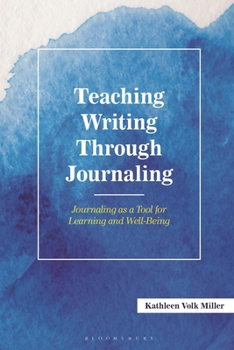Teaching Writing Through Journaling: Journaling as a Tool for Learning and Well-Being
We are in the midst of a youth mental health crisis so severe that the U.S. Surgeon General has called it "the defining public health crisis of our time." By the age of 18, 17.1 million young people are living with a mental health disorder. Alarming statistics show that 60% of teens report feeling sad or hopeless most of the time, and one in three teen girls has experienced suicidal ideation. But there is hope: early intervention can change outcomes. Helping children develop a healthier outlook early on is key-and writing can be a powerful tool in this process. When schools prioritize students' social-emotional and mental health needs alongside academics, overall performance improves.
Writing helps students identify, regulate, and express their emotions, which not only fosters emotional resilience but also improves writing skills and academic achievement. Journaling can increase students' self-awareness, confidence, and ability to process complex thoughts. Research shows that students who write regularly perform better academically than those who don't, as writing strengthens conceptual understanding and critical thinking. The first book in a new series on teaching writing, Teaching Writing through Journaling presents practices that make writing a daily habit, helping students internalize its value for learning and well-being. Instructors who engage in these practices benefit as well-emotionally and physically. It's time to flip the script: success doesn't create happiness; happiness fuels success.
Teaching Writing series:
This series for K-12 and collegiate writing and English teachers, educators, curriculum specialists, and preservice teacher education candidates provides methods, pedagogy and practical exercises in the teaching of writing.
Books in the series explore the vast array of ideas, strategies and topics that actively engage students in developing skills that will help them become better writers, critical readers and critical thinkers. These fresh methodologies will expand students' ideas on what writing means, as well as what learning can mean. Various approaches in the series will rejuvenate instructors and feed educators' own desires as lifelong learners.
Each book is meant to make the educators lives both easier and more fulfilling, as the texts in this series include a plethora of writing exercises, prompts and approaches. Many titles will benefit educators from various disciplines who are interested in implementing more writing into their curriculum.
Writing helps students identify, regulate, and express their emotions, which not only fosters emotional resilience but also improves writing skills and academic achievement. Journaling can increase students' self-awareness, confidence, and ability to process complex thoughts. Research shows that students who write regularly perform better academically than those who don't, as writing strengthens conceptual understanding and critical thinking. The first book in a new series on teaching writing, Teaching Writing through Journaling presents practices that make writing a daily habit, helping students internalize its value for learning and well-being. Instructors who engage in these practices benefit as well-emotionally and physically. It's time to flip the script: success doesn't create happiness; happiness fuels success.
Teaching Writing series:
This series for K-12 and collegiate writing and English teachers, educators, curriculum specialists, and preservice teacher education candidates provides methods, pedagogy and practical exercises in the teaching of writing.
Books in the series explore the vast array of ideas, strategies and topics that actively engage students in developing skills that will help them become better writers, critical readers and critical thinkers. These fresh methodologies will expand students' ideas on what writing means, as well as what learning can mean. Various approaches in the series will rejuvenate instructors and feed educators' own desires as lifelong learners.
Each book is meant to make the educators lives both easier and more fulfilling, as the texts in this series include a plethora of writing exercises, prompts and approaches. Many titles will benefit educators from various disciplines who are interested in implementing more writing into their curriculum.
Format:Hardcover
Language:English
ISBN:1475874685
ISBN13:9781475874686
Release Date:October 2025
Publisher:Bloomsbury Academic
Length:160 Pages
Weight:0.83 lbs.
Dimensions:0.4" x 6.0" x 9.0"
Customer Reviews
0 rating





